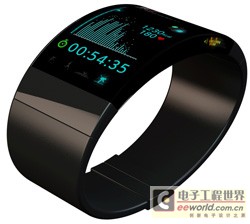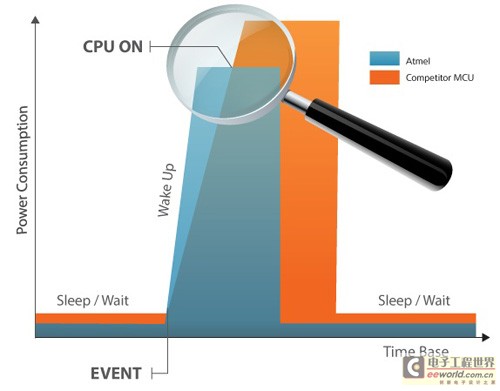Beijing time on October 17th news, China's touch screen network news, extending battery life is the primary development consideration of smart watches. To achieve this goal, designers must use a microcontroller (MCU) that consumes less power in the active/dynamic mode and can maintain high-performance operation at the same time, and introduces a fast wake-up function to keep the MCU as dormant or as possible. Idle mode further reduces overall system power consumption.
How to define the so-called smart watch? Basically, the smart watch is designed as a watch-type, wearable computing device that provides more intelligent functions when wirelessly connected to a smart phone. Common features include calendar notifications, emails, or newsletters. If you also have built-in sensors, such as accelerometers or temperature sensors, smart watches can help record and monitor the user's movement progress, performance and heart rate. Some watches can also control music, read newsletters, and even receive calls directly from the watch via the Bluetooth Low Energy (LE) link on the user's phone.

So, what are the key design considerations for developers of smart watches? In the product design process, it is easy to unconsciously want to add more and more powerful functions. However, a powerful watch application usually has to be paired with a relatively powerful processor, while a powerful processor tends to consume a lot of power, resulting in a performance gain with a bonus effect, which is offset by power consumption. After all, even if it's more powerful, who would be willing to buy a smart watch that will charge once every few hours?
In order to extend the battery life, the best way to do this is to consider the lower power components in the active/dynamic mode when considering the heart of the system, the central microcontroller (MCU).
In the system design, the central microcontroller of the smart watch must be able to maintain the sleep mode most of the time, and when the system must be awakened to perform the task, it can not affect the system performance and be in the shortest time. wake.
Maintain low power consumption in active/dynamic mode
Of course, the designer hopes to have the lowest power consumption mode without sacrificing performance. However, if you only reduce the power consumption in the working/dynamic mode, the operation speed of the microcontroller will be reduced, resulting in micro The controller will spend more time in the working mode in order to complete the task execution and enter the lower power sleep mode, which will eventually increase the average power consumption of the system. In addition, everyone knows that the lower the operating voltage of the system, the longer the battery life can be extended. Some microcontrollers claim that the operating voltage can be as low as 1.8 volts (V), but in fact, when the operating voltage is 1.8V, not only the operating speed is reduced, but some peripheral functions may not work properly. These are not really A technology that helps the system reduce power consumption.

There are already manufacturers in the market that have introduced microcontrollers that can maintain high performance in low power consumption situations. Atmel's SAM4L microcontroller family, on the other hand, maintains operating voltages as low as 1.68V without changing product specifications, while maintaining maximum performance with no peripheral effects. According to the Fibonacci benchmark, the family is the ARM Cortex-M4 microcontroller with the lowest operating/dynamic mode power consumption (90μA/MHz) on the market. If you use Power Scaling technology, you can further balance the maximum clock speed and power consumption.
In addition, if the designer chooses a microcontroller that offers different voltage regulator options, the system power consumption in the active/dynamic mode can be further reduced. For example, a buck or switching regulator can provide higher power at an operating voltage of 2 to 3.6V, or a linear regulator operating in the range of 1.68 to 3.6V, which has high noise immunity. The regulator can achieve the highest power in the range of less than 2.3V.

Incremental Encoder,Linear Scale Encoder,Dual Concentric Rotary Encoder,Dc Servo Motor Encoder
Yuheng Optics Co., Ltd.(Changchun) , https://www.yhenoptics.com